"Let's Go To The Amusement Park" |
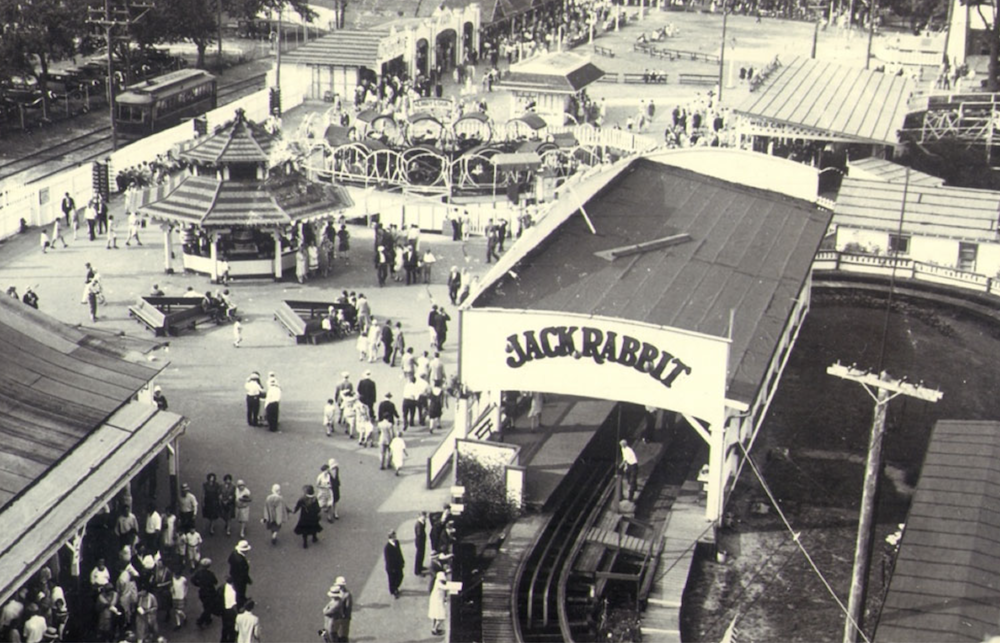
Sea Breeze amusement park north of Rochester, NY (c. 1905) - Note trolley top left corner |
|
|---|---|---|
| Text & Format by: R. Craig Rutherford -- New: 1 January 2024 | ||
|
As the Nineteenth century came to a close, the electric trolley and interurban had become
an important transportation component of local travel, to work, shop and to play -- and
an occasional weekend a trip to the amusement park. These thrill-ride, carnival-attraction
family-fun sites were in their heyday, and they dotted the American landscape in urban areas
and rural country-sides. It is not surprising that many amusement park owners were only too
happy to see a local interurban / trolley company lay tracks adjacent to their recreation venue.
In a few instances, the transportation entity was also one of the amusement park's
financial-backers. These entrepreneurs recognized that an amusement park was an excellent
means of building ridership. However, that formula did not always translate into success nor
longevity.
Let's look at western New York as an example. The most notable interurban railway / entrepreneur of the region was the Jamestown & Eastern which built Midway Park in 1898. Renamed the Jamestown Westfield & Northwestern, the 32-mile electric railway served communities adjacent to Lake Erie, southwest of Buffalo. Further east, there was another independent interurban railway that also provided clean, fast and frequent service. It was the Rochester, Lockport & Buffalo serving its namesake and communities along Lake Ontario and south; the RL&B also had a line that went to the Sea Breeze amusement park which opened in 1906. Another prominent railway property serving the region and notable family-oriented attractions (including Niagara Falls) was the International Railway. Additionally, any discussion of electrified railways in the region would be incomplete without references to the New York State Railways, as well as Buffalo & Erie, which was the lynch-pin between western New York and the interurban networks of Pennsylvania and Ohio. To keep pace in a very competitive market, B&LE or example employed a large fleet of passenger motors from five different car builders:
Maintaining a solid revenue base of passenger and/or freight traffic was far from a simple task. The automobile and its growning sales was significantly impacting nearly every aspect of society and economy. The four western New York electric traction companies also faced other threats: (1) Stiff competition from New York Central (at some locations their tracks ran adjacent) (2) A growing network of newly paved roads, and (3) Multiple bankruptcies. The Depression, which began in late 1929, led to the demise of many interurban properties across the country. The RL&B, which paralleled the Erie Canal for several miles, was the first to succumb. The B&E followed two years later in 1933, with the International Railway lasting until the mid-1930s. In contrast, the JW&NW limped along until 1950. As for the Sea Breeze and Midway State amusement parks, they continue to draw large crowds evem today. |
||
Photo Gallery | |
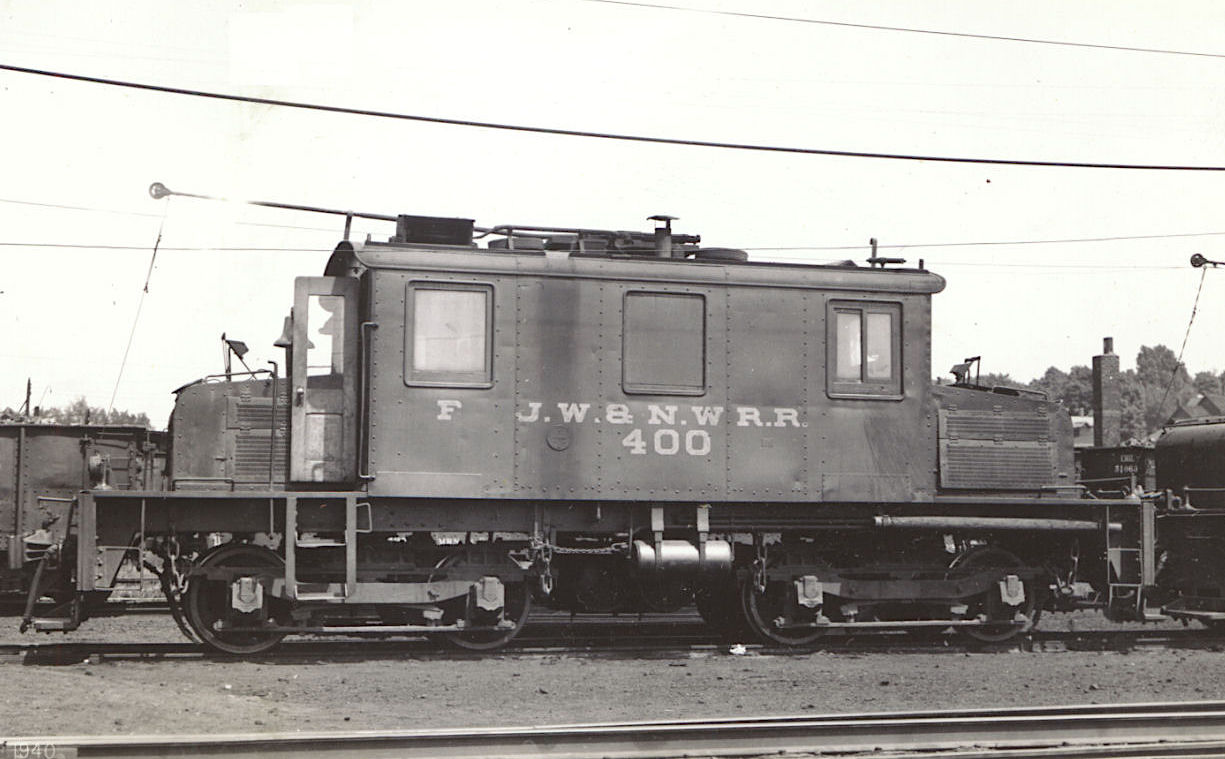
Jamestown Westfield & Northwestern #400 typifies a standard Class B
Baldwin electric of 1914/1915. The freight locomotive rode on rigid-bolster trucks, with
type 582 FD5 traction motors, each with a 100-hp rating; the T/Ms were direct geared and
axle mounted. Power for the 36-foot-long freight motor used three-phase, 600- volt AC from
a single trolley pole. (Photographer unknown / Tom Starr collection) |
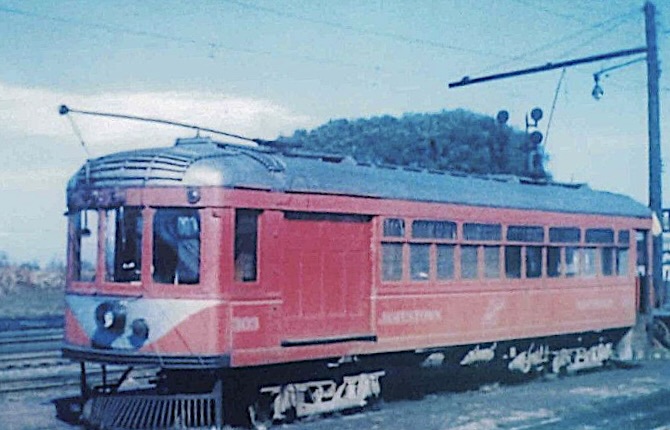
Jamestown Westfield & Northwestern #303 is a freight express motors built
from a converted wooden passenger car by the JWNW shop forces. The location of this photo
was probably Westfield, NY. The tracks in the background belong to New York Central predecessor
Lake Shore & Southern Michigan. (Photographer unknown). |
In this turn-of-the-century photo time has stopped in downtown Fredonia, NY.
Several motor express, streetcars and interurbans are idle outside the once famous Columbia
Hotel (destroyed by fire in 1918). A motorman stands on the roof of an electric, possibly to
fix a trolley pole. Meanwhile, a man with a horse-and-buggy team (center) has the road all
to himself. (Photographer unkn) |

The 148-mile Buffalo & Lake Erie Transit used streetcars, interurbans and
freight motors.
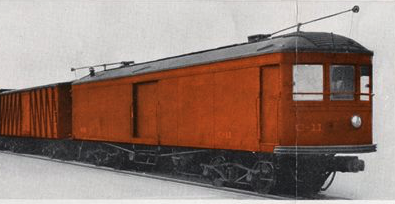 |
The annual "Pioneer Picnic" at Olcott Beach in the 1900s was a popular
summer event, and the best way to get there was the Buffalo Lockport & Rochester which
offered direct service from several communities. This vintage post card depicts the event.
(Art Peterson collection).
|
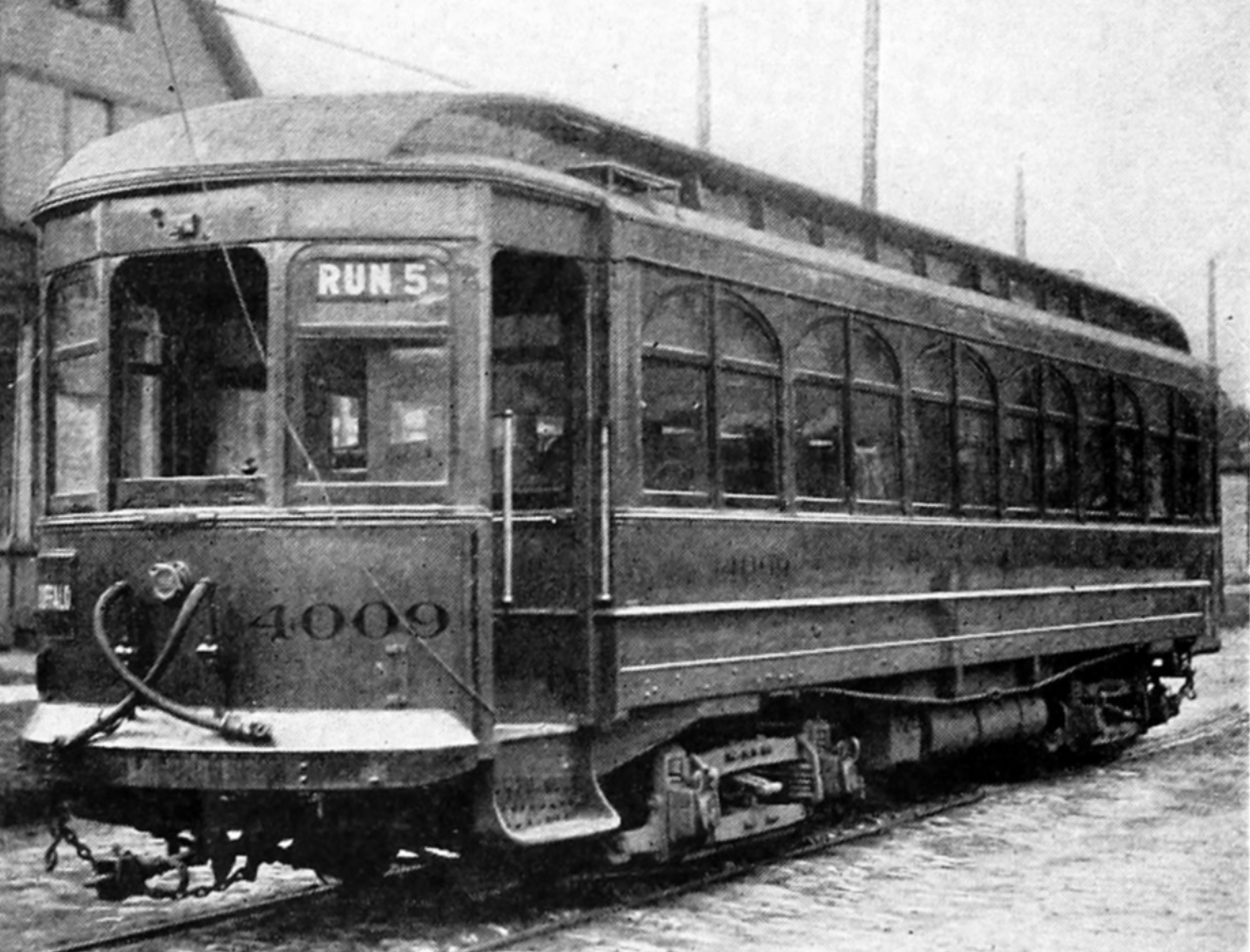
J.G. Brill-built #812 was delivered to International Railway in 1904 as a 3
4-foot city trolley; but growth in intercity traffic necessitated the motor car be rebuilt
for interurban service on the railway's Lockport Line. (Public domain photo)
|
Buffalo & Lockport traction company followed by the Buffalo Lockport & Rochester
electric railway were the predecessors of RL&B. The Locomotive seen here is a 36-ton steeple
cab built by General Electric. In addition to a pair of GE freight motors, the railroad
operated ten electric motor cars built by the J.G. Brill Company. (Public domain photo) |
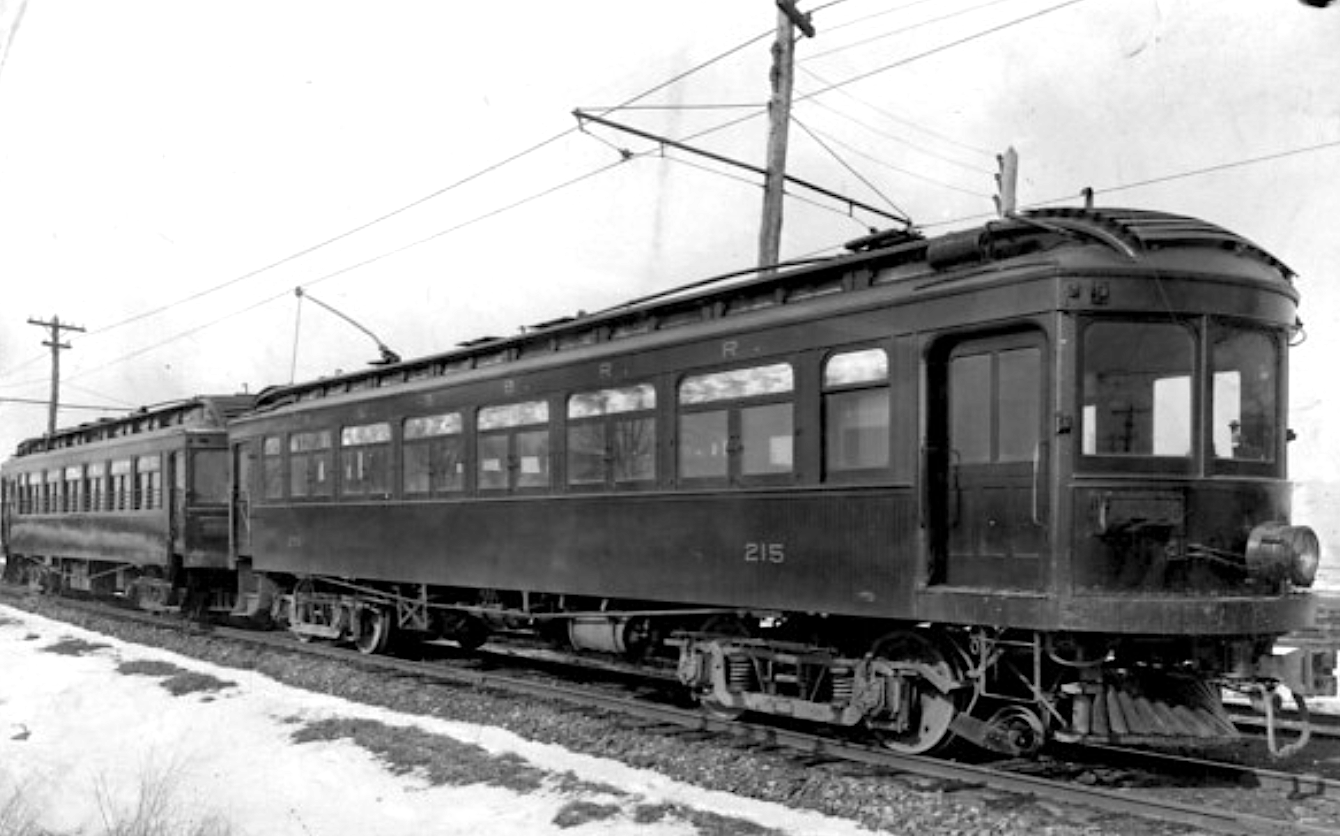
The early 1900s were witness to the founding of many New York-based interurban
railways, including several that served the booming city of Rochester. The future for most
came crashing down during the Depression; RL&B was reportedly the "last one standing." The
motor car tandem depicted here were photographed in Spencerport, NY; the lead unit is a
passenger/ baggage combine. (Town of Ogden, NY photo) |
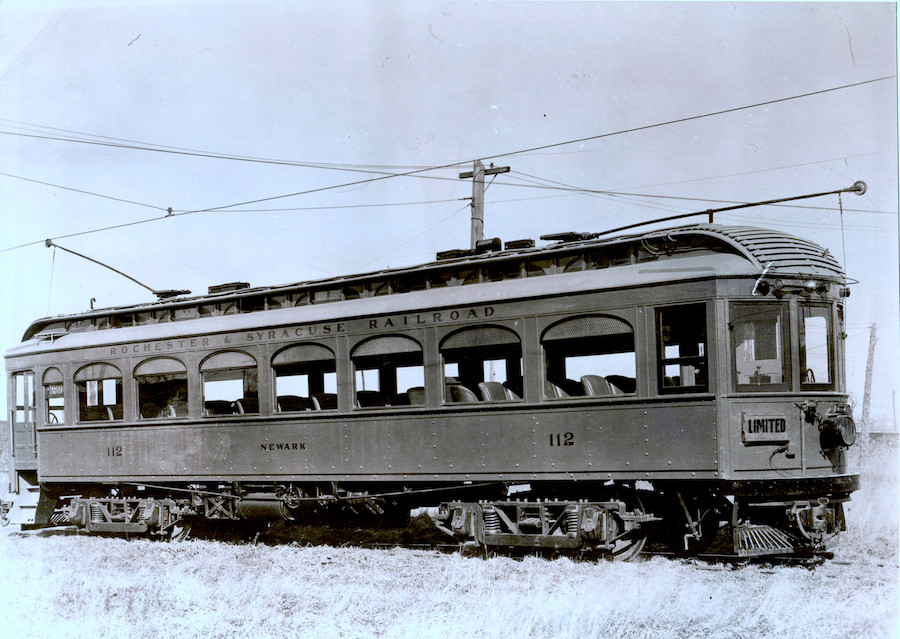
R&S's fleet of "Limited" cars were luxurious and geared for high-speed running
(80+ mph); four 125-hp motors made their sustained speeds possible. This photo of car #112
was taken outside the traction company's Lackland Shop during 1927. (George Krambles photo /
Krambles-Peterson Archives) |
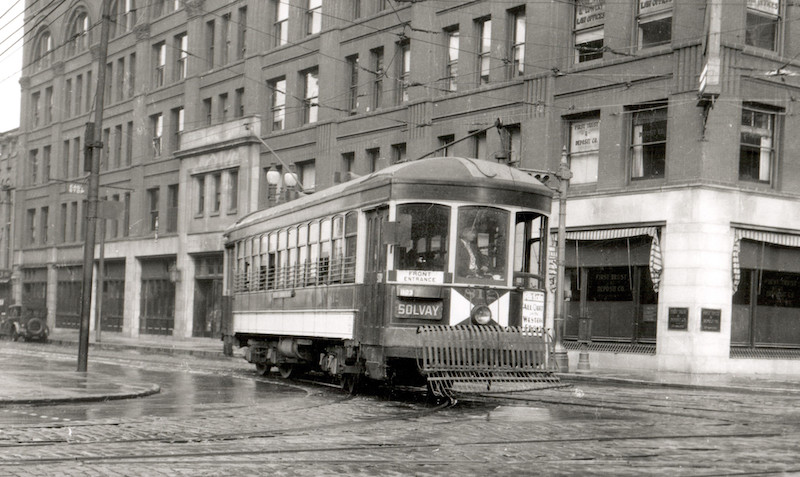
Faced with growing competition from interurban and streetcar lines in western
and up-state New York, the NYC railroad acquired several of those competitors in 1909 under
the NYSR umbrella. At its peak, the company owned 380 miles of track and stretched from
Rochester to Geneva. The backdrop for this shot of NYS #812 is Syracuse in September 1930,
not long after the company's financial collapse. (Krambles-Peterson Archives) |
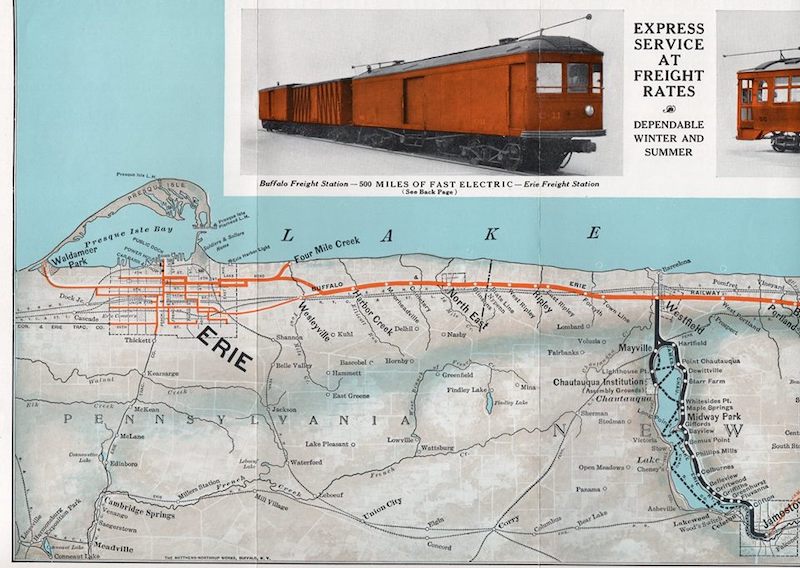 |
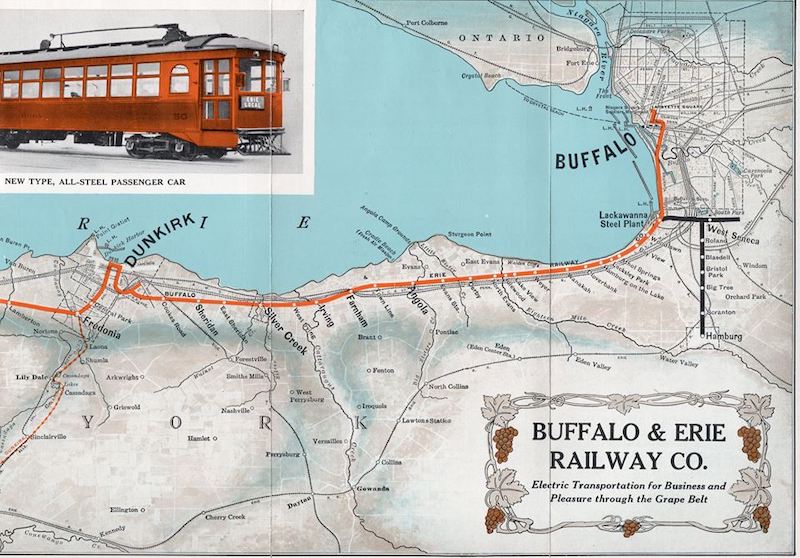 |
Reference sources and contributors:
|